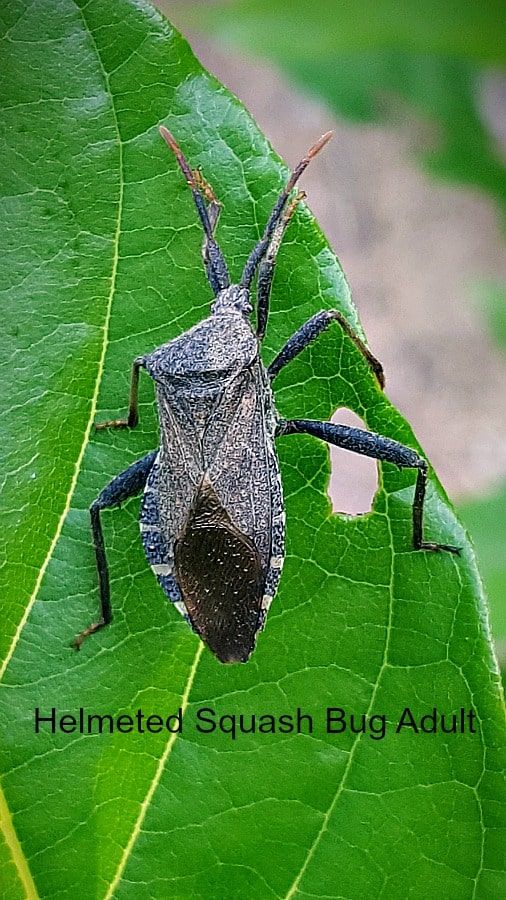
When summer gardening time comes around, my most frequently heard question is: What can I do about squash bugs? Well, let us take a look into the problem and find a solution that will work for most home gardeners.
What do we need to know about squash bugs?
As we delve into the problem of squash bugs, we will look at the following items:
- Squash bug identification and history
- Life Cycle
- Cultural Controls
- Natural Predators
- Organic Controls
Squash Bug Identification and History
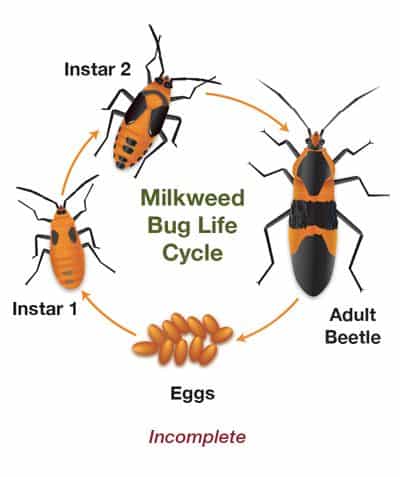
The squash bug, bane of gardeners, is native to Central and South America. It has followed the movement and spread of pumpkins, squash, and gourds across North America.
Squash bug adults are dark gray, brown, or black and narrow, about 1/2″ long. There are several species in North America. The nymphs are usually gray or black, like mini versions of the adults. True bugs do not go through complete metamorphosis. See photo
The eggs of the squash bug are reddish-brown in color, laid on the underneath side of plant leaves. They are in groups of 15 to 25.
It has piercing-sucking mouthparts that suck out plant juices, while often transferring diseases in. Because of this ability to vector diseases, and their gregarious feeding, they can overwhelm plants quickly.
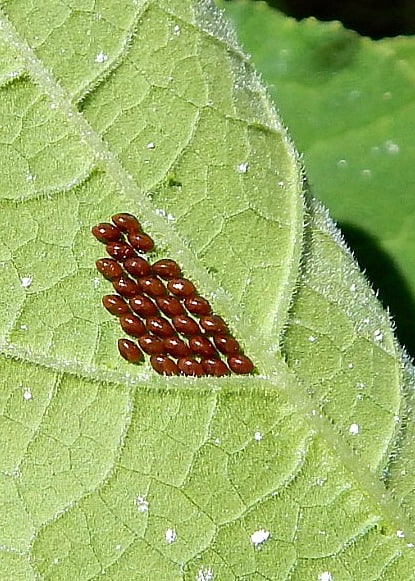
Life Cycle of the Squash Bug
The whole life cycle takes just 6-8 weeks to complete. In Zones 5 and cooler, just one generation per year is obtained. South of Zone 5 may have 2 to 3 generations.
The eggs are deposited either on the lower leaf surfaces or on leaf petioles by the female adult. They hatch in 7 to 9 days, leaving you plenty of time for control if you check your plants regularly.
Once the nymphs have emerged, they go through 5 instars over 33 days before becoming adults. During this time, the feed in large numbers, occasionally cannibalizing each other. This time period is where most of the damage is done.
Adult bugs overwinter in debris, leaves, mulch, or in nearby brush piles and buildings.
Cultural Controls for Squash Bugs
Now that you know what to look for, lets find some ways to deal with these pesky bugs. One of the most important things to do is cleanup in the fall. While many landscapers do not cleanup flower beds in autumn for overwintering insects, vegetable gardeners would be unwise to follow suit.
- Removing dead and diseased foliage as soon as you can after harvest will prevent bugs from hiding there. Pull back old mulches and add them to the compost pile, then turn the pile so they can break down.
- Floating row covers are sometimes advertised for protection against squash bugs. However, you would have to lift these for pollination of the flowers, thus letting the bugs in.
- A simple way to prevent most infestations is to check plants daily or twice weekly, and handpick egg masses or adults and drop into soapy or vinegar water. If you have let it go, use a small shop vac to suck up nymphs and adults, dumping the contents into soapy water or fire.
- Crop rotation or delayed timing can lessen the effects of squash bugs, but will not prevent them completely.
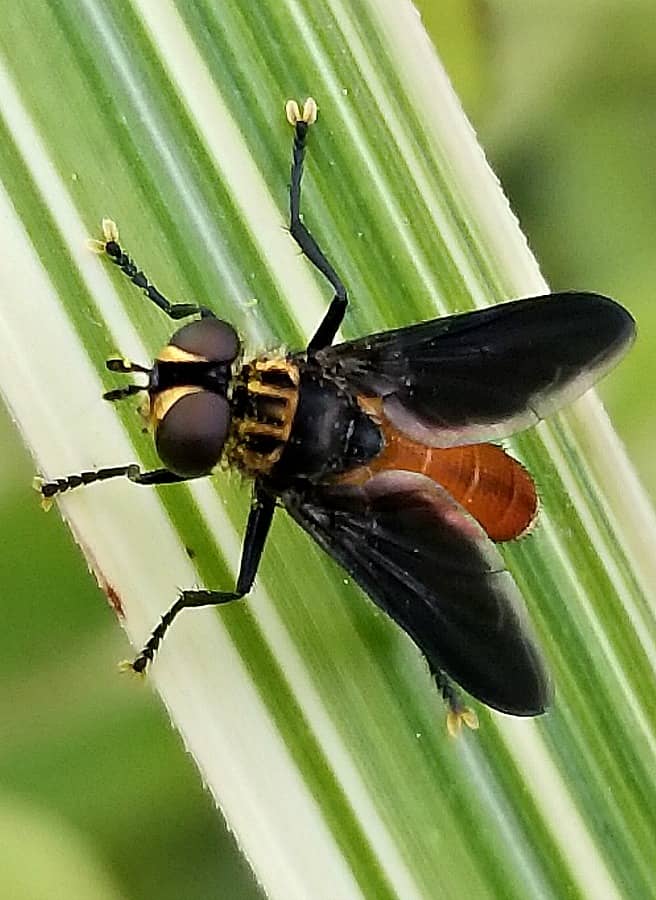
Natural Predators
The feather-legged fly, a member of the Tachinidae family of parasitoid flies, attacks adult squash bugs. The fly lays one or more eggs on the body of the adult squash bug. Larvae then hatch and burrow into the bug, only one of which survives. The larvae then feed on and kill the bug and then emerges and pupates in the soil.
Tachinid flies can be attracted by adding flowers to the vegetable garden. I like to use dill, fennel, and mountain mints to attract beneficials.
Organic Controls
The best chemical-type controls for squash bugs are organic controls. I do not recommend any synthetic chemicals for use in your vegetable garden. There are better ways.
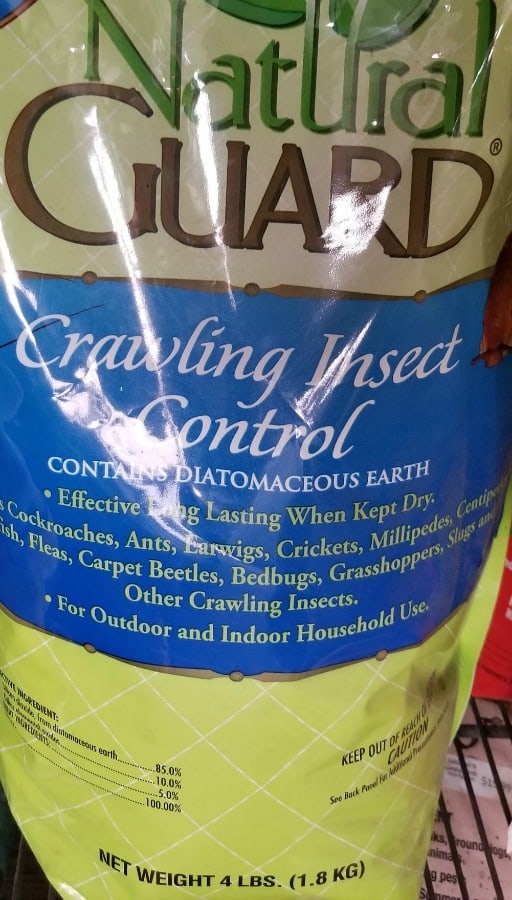
- Diatomaceous earth (DE) can be applied to the soil surface around each individual squash plant. As insects walk through DE, the tiny shells will tear through the bodies of nymphs and adults and kill them. However, DE must be reapplied after a rain or heavy dew.
- Another way is to spray the nymphs with soapy water. The oils of the soap with clog the pores of the nymphs, effectively suffocating them.
Where to get Diatomaceous Earth, Squash transplants, or seeds
Here at Grimm’s Gardens we sell Diatomaceous earth in a couple of formulations, designed to kill crawling insects. During spring and summer months we also have squash and pumpkin seeds and transplants for your garden. Our locations are 2991 Goldfinch Road Hiawatha, KS or 1401 S 11th St, Nebraska City, NE.
Happy planting!



